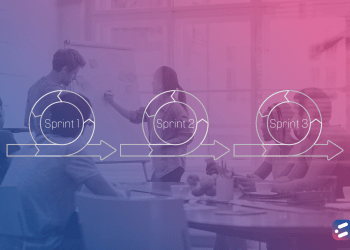Since the inception of the Agile methodology and DevOps solutions, development cycles have become shorter and smoother, thanks to agile’s iterative process of working and DevOps’ cross-collaborative operations.
While you might be satisfied with just integrating Agile with DevOps, you could do more to shift left with LeanFT within the Agile and DevOps framework.
We realize that may have sounded confusing – so let’s try to understand the above sentence better by breaking it down.
Agile Infrastructure:
In Agile software development, project management is broken down into smaller modules which are assessed frequently for feedback. Any changes to be made to the project is carried out across all the modules to ensure continuity. It ultimately aims to reduce the time taken for the final release while still making continuous improvements with every release.
DevOps:
In the DevOps method of software development, the emphasis is placed more on collaboration as compared to documentation. With DevOps, the development and operations teams work in tandem instead of the conventional to-and-fro method which stunts the speed of software development.
By combining Agile and DevOps, companies drastically increase the number of deployments of the software with a special focus on being responsive to changes.
Shift Left:
In the waterfall model of software development, developers would be brought into the picture only after the ‘software analysis’ step. Any small improvement to be incorporated would again have to pass through the tedious phase of ‘system requirement’, ‘software requirement’ and ‘analysis’. With Agile, this was eliminated and business, operations and development teams were brought in much earlier into the SDLC.
However, even with Agile, most companies bring in testers only in the final part of the SDLC. Any communication with testers prior to that would be to discuss analytics. The development team and operations team work hands-on on the project from start to finish on multiple modules which have gone to through massive changes – why should testing become the bottleneck here?
Testing requires proper analysis across scores of use-cases and more often than not, new builds will need to be developed for rectifying bugs and other inconsistencies.
Getting testers involved in the start of the SDLC to improve the smoothness of deployments is the best way to describe ‘shifting left’ – basically moving the testing process earlier in the process, or towards the left of the development timeline. Shifting left guarantees that testers know the ins and outs of customer behaviour, helping them come up with design changes which are foolproof.
LeanFT:
LeanFT (Lean Functional Testing) is a testing tool which was created by HP with the specific goal of integrating testing with Agile and DevOps. LeanFT is not a stand-alone tool but merely an extension of HP’s UFT (Unified Functional Testing) tool. It is directly accessible from UFT 12.5.
LeanFT is a light-weight solution which equips testers to enter the development cycles much earlier. It also allows for continuous delivery without disrupting the developments.
By providing a seamless flow for test execution, LeanFT can be integrated with IDEs like Cucumber, C#, Eclipse, and Visual Studio. LeanFT also supports common AUT (Application Unit Testing) tools like Windows, SAP,.Net, and Java.
Since shifting left with LeanFT introduces testers much earlier in the SDLC, there won’t be any new or surprising system requirements.
At CloudNow Technologies, we provide DevOps services which help you shift left your testing and increase your company’s operational efficiency exponentially. If you’re looking to accelerate your journey to the left, do get in touch with us!













